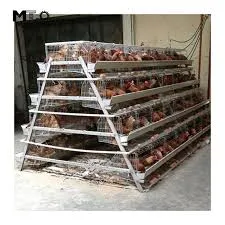Top Chicken Scalders for Perfect Plucking and Processing Every Time
Dec . 05, 2024 14:04 Back to list
Top Chicken Scalders for Perfect Plucking and Processing Every Time
The Best Chicken Scalder A Comprehensive Guide to Optimal Poultry Preparation
When it comes to processing chickens for culinary purposes, one of the most crucial yet often overlooked steps is scalding. Scalding is the process of immersing the bird in hot water to loosen feathers, making plucking easier and more efficient. If you're delving into poultry processing, understanding the importance of a good scalding unit—or chicken scalder—is essential to your operations. This article will explore what makes the best chicken scalder, how to choose one, and some insights into the scalding process itself.
What is a Chicken Scalder?
A chicken scalder is a specialized piece of equipment designed to heat water to a specific temperature, allowing poultry to be soaked just long enough to loosen their feathers without cooking the meat. The ideal temperature for scalding chickens generally ranges between 140°F to 160°F (60°C to 71°C). Achieving the right temperature is crucial; too low, and the feathers remain stubbornly intact, while too high can lead to skin damage and impact the quality of the meat.
Features of the Best Chicken Scalder
1. Temperature Control The best chicken scalders come equipped with precise temperature control features. Look for models that allow you to set and maintain your desired temperature accurately. Some units also offer temperature gauges to monitor the water’s heat consistently.
2. Water Capacity Depending on your needs—whether for a small farm or a larger poultry operation—the capacity of the scalder will vary. For professional operations, a scalder that holds 20 to 30 gallons of water is ideal, allowing for multiple birds to be processed at once. Hobby farmers might find smaller models that hold 10 gallons sufficient.
3. Heating Elements Efficient heating elements are essential for the quick heating of water. Electric, gas, and propane models are popular; the choice often depends on the availability of resources and the size of your operation. Electric models are generally easier to manage and can be more energy-efficient.
4. Material and Build Quality Choose a scalder made of durable materials, such as stainless steel. Not only does this ensure longevity, but it also makes for easy cleaning—a vital factor in maintaining sanitary conditions when processing poultry.
best chicken scalder

5. Ease of Use A user-friendly design will save you time and effort when scalding chickens. Look for features like insulated handles for safe transport, easy access for cleaning, and a drainage system for quick emptying after use.
The Scalding Process
Once you have invested in the best chicken scalder, it's essential to understand the scalding process thoroughly. Here’s a step-by-step guide
1. Prepare the Scalder Fill the scalder with water and heat it to your desired temperature. Make sure to monitor the temperature closely to prevent overheating.
2. Submerge the Chickens Once the water is at the right temperature, carefully immerse the chickens. Ideally, each bird should be submerged for about 30 to 60 seconds, depending on the size and the number of feathers.
3. Movement Gently agitate the water or the birds to ensure even exposure. This movement helps to loosen the feathers more effectively.
4. Plucking After the scalding time has elapsed, remove the chicken and begin plucking. The feathers should come out easily, which reduces the time and effort needed for cleaning.
Conclusion
Investing in the best chicken scalder can significantly improve your poultry processing experience, leading to better quality meat and increased efficiency. By understanding the essential features, the importance of temperature control, and the scalding process itself, you set yourself up for success in your poultry ventures. Whether you’re running a commercial operation or processing a few birds at home, the right scalder is a game changer in achieving perfectly processed chicken. So, gear up, choose your scalder wisely, and enjoy the benefits of fresh, home-processed poultry.
-
Hot Sale 24 & 18 Door Rabbit Cages - Premium Breeding Solutions
NewsJul.25,2025
-
Automatic Feeding Line System Pan Feeder Nipple Drinker - Anping County Yize Metal Products Co., Ltd.
NewsJul.21,2025
-
Automatic Feeding Line System Pan Feeder Nipple Drinker - Anping County Yize Metal Products Co., Ltd.
NewsJul.21,2025
-
Automatic Feeding Line System - Anping Yize | Precision & Nipple
NewsJul.21,2025
-
Automatic Feeding Line System - Anping Yize | Precision & Nipple
NewsJul.21,2025
-
Automatic Feeding Line System-Anping County Yize Metal Products Co., Ltd.|Efficient Feed Distribution&Customized Animal Farming Solutions
NewsJul.21,2025






